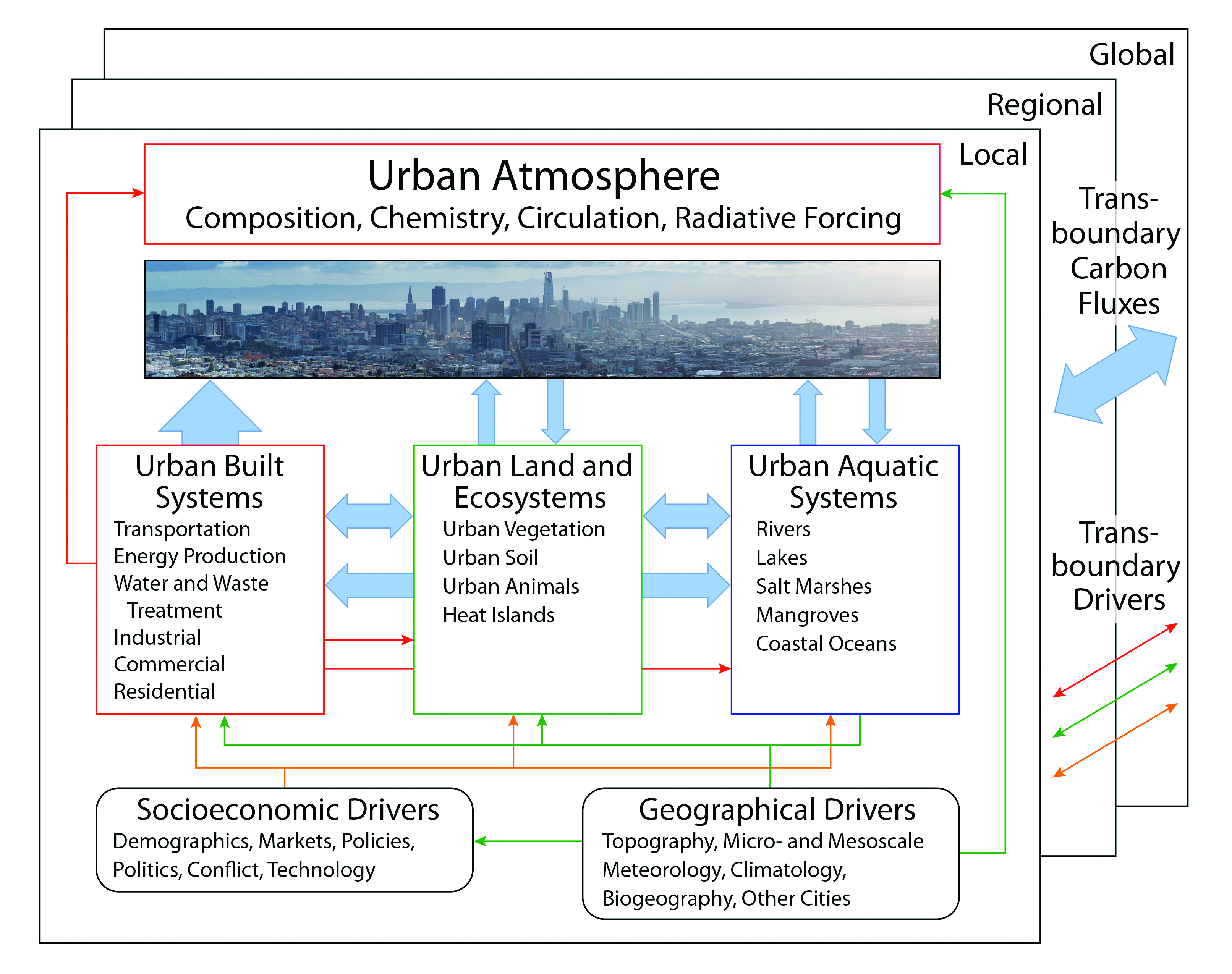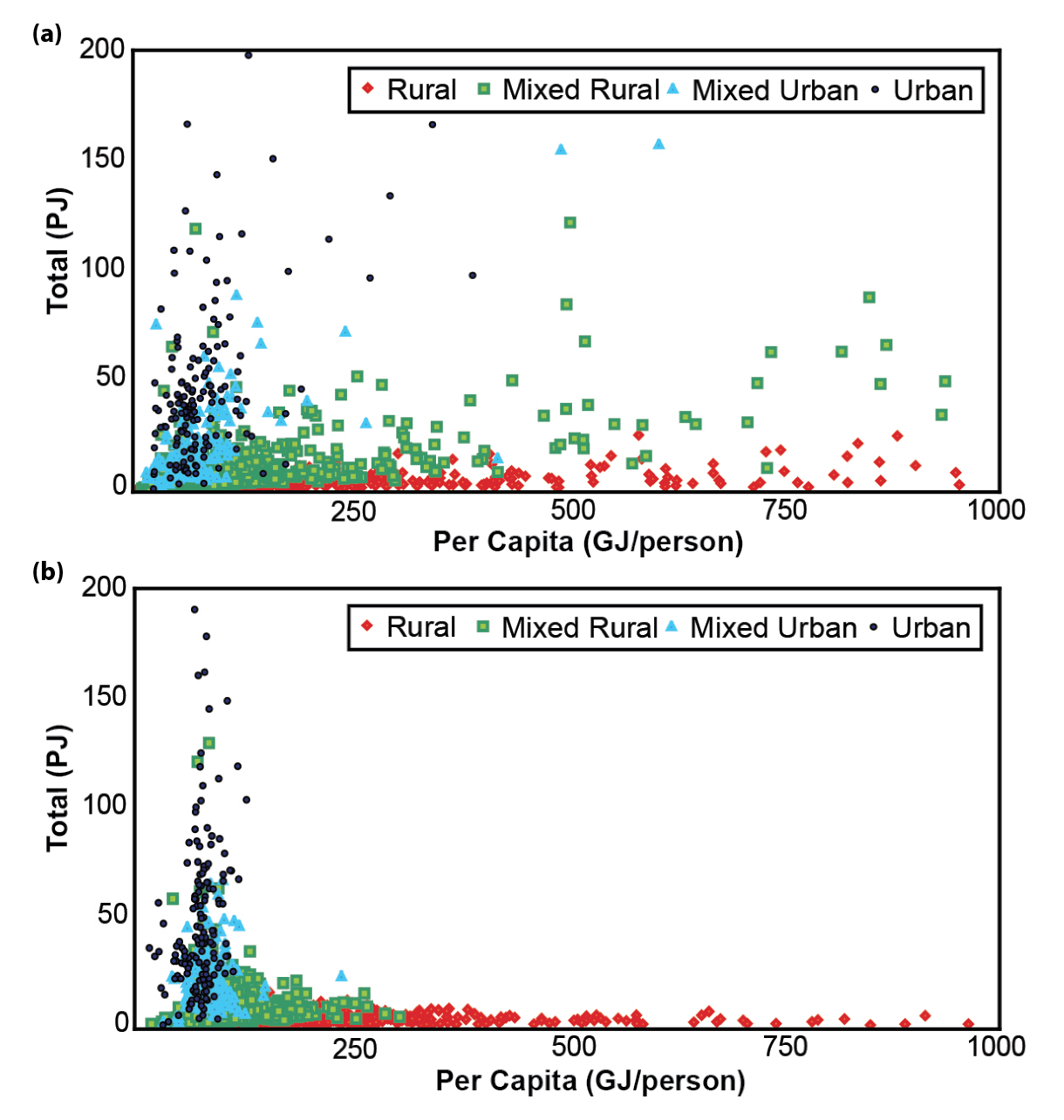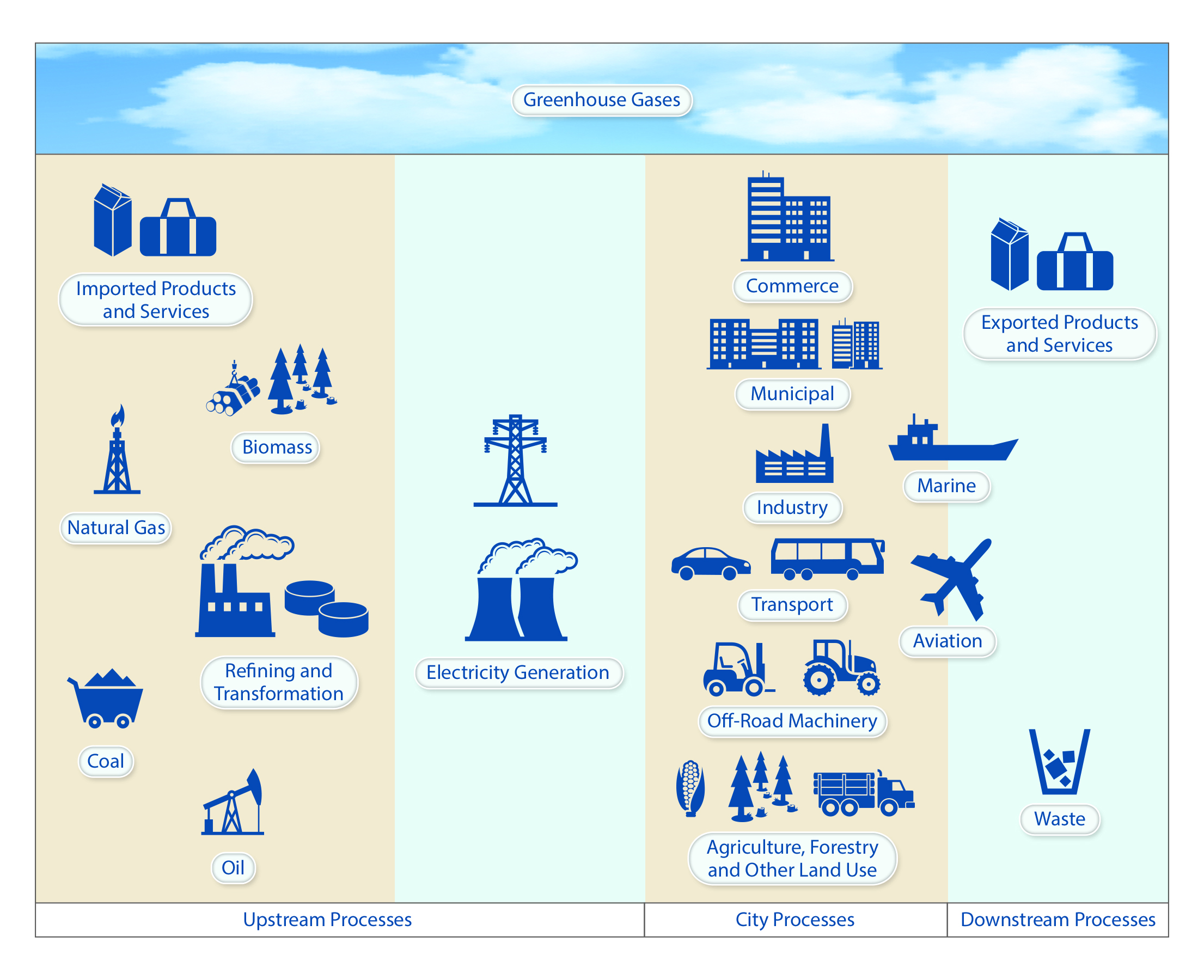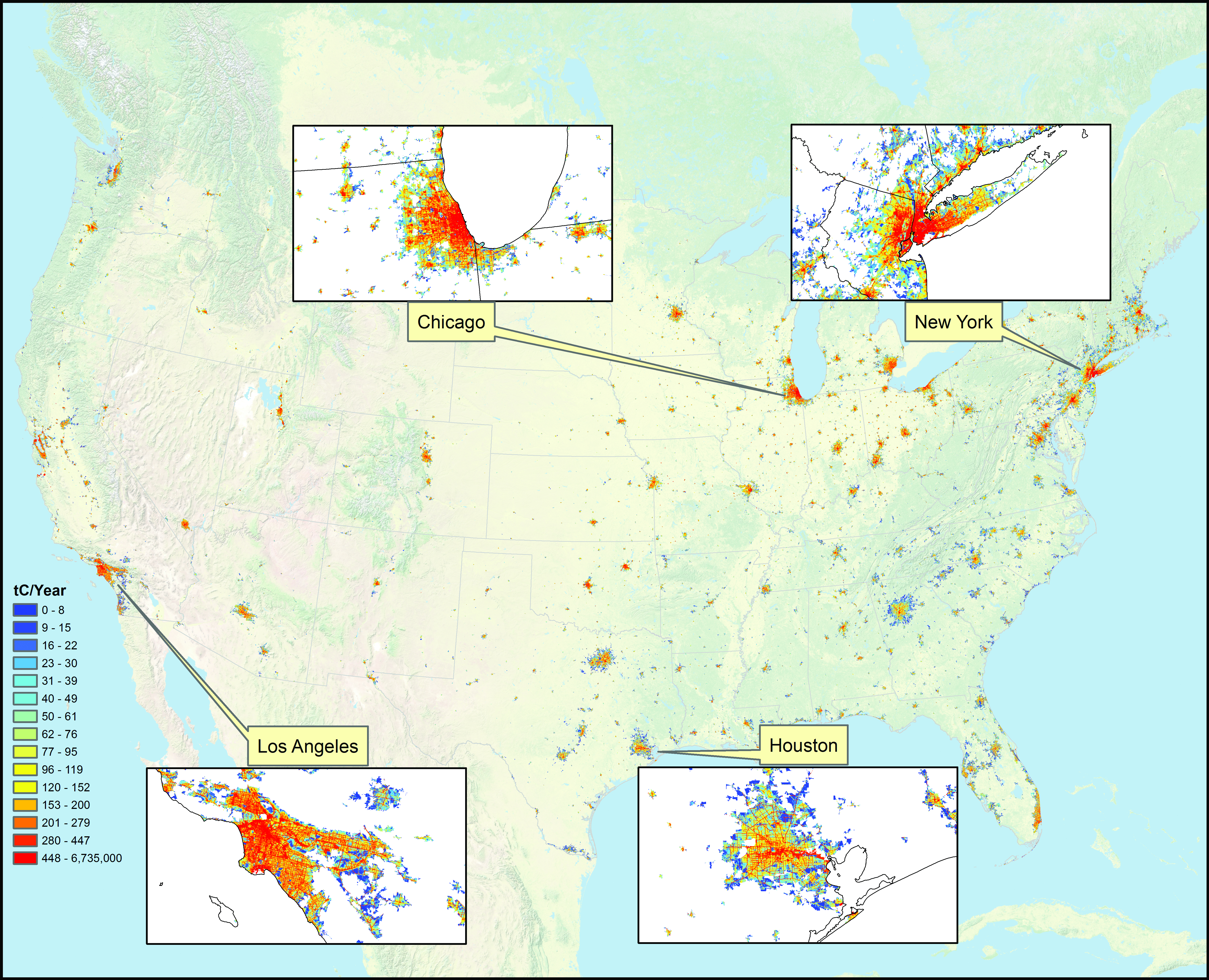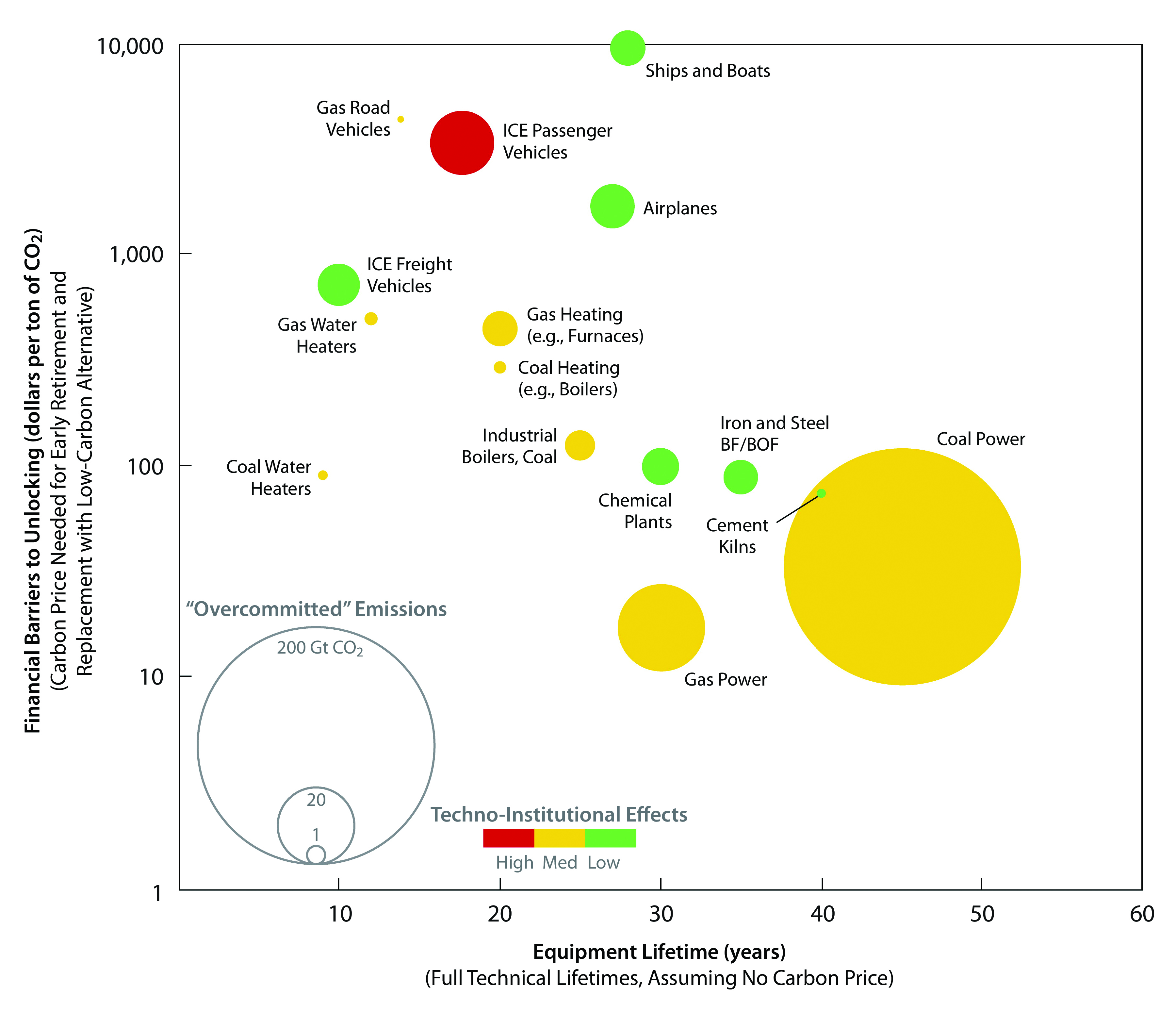Since the mid-1990s, cities around the world have increasingly engaged in carbon management efforts, reflecting a growing recognition that cities are both locations where emissions-producing activities occur and political jurisdictions with authority over some of those activities (Castan Broto and Bulkeley 2013). The number of cities that have committed to some form of carbon reduction has increased exponentially, from fewer than 50 in the early 1990s, several hundred by the early 2000s (Bulkeley and Betsill 2003), and several thousand a decade later (Krause 2011; Pitt 2010). North American cities have played a particularly important leadership role, emerging as key sites for experimentation and innovation with different types of policies, technologies, and programs (Burch 2010; Castan Broto and Bulkeley 2013; Hoffmann 2011; Hughes and Romero-Lankao 2014, 2015).
4.6.1 Importance of Governance and Multilevel Networks
Key factors in the ability of city governments to manage carbon emissions are the mandates and competencies of municipal governments, financial resources, presence of political champions, multilevel networks, an open political opportunity structure, and the ability to capitalize on co-benefits valued by local residents (Betsill and Bulkeley 2007; Ryan 2015). Local authorities in North America also encounter a number of barriers, including the lack of coordination across different parts of city government, sunk investments in infrastructure, and resistance to change of the local political economy (Romero-Lankao et al., 2013, 2015; Sharp et al., 2010; Tang et al., 2010; Tozer 2013). A recent study found that U.S. city membership in the International Council for Local Environmental Initiatives (ICLEI) declined 22% between 2010 and 2012 and that large numbers of cities had abandoned their climate policy efforts altogether (Krause 2015).
Local carbon mitigation efforts also are limited by infrastructure lock-in and “path dependencies” created from previous policy decisions and investments, which can make changing direction politically difficult and expensive (Unruh 2000). Path dependency is a function of infrastructure cost and life cycle and is influenced by the way that decisions are made (Romero-Lankao et al., 2017). For instance, the low-density urban form of North American cities such as Los Angeles has been largely the result of freeway construction programs of the California Division of Highways (Wachs 1993). These decisions have created a path-dependent use of private vehicles, associated with more energy use and more carbon emissions (Kenworthy 2006).
There is one important difference in the policy contexts of cities in the United States, Canada, and Mexico. Cities occupy different jurisdictional space and face different economic, institutional, and political contexts. Decision making in the United States is generally more decentralized than that in Canada and Mexico, potentially giving city governments more autonomy (Bulkeley and Betsill 2013). Notwithstanding these across-country differences, the challenges and opportunities cities face, such as economic development, air pollution, and transit access, vary as much within countries as between them. For example, policy aimed at mitigation of local air pollution has resulted in climate policy co-benefits in most large North American cities, including Mexico City, but results typically are not as salient for smaller cities (Romero-Lankao 2007).
While municipal governments have some control over carbon emissions, urban carbon management ultimately takes place in a multilevel governance context, whereby climate policy efforts have the potential to be spread across different levels of political jurisdiction and pursued through diverse forms of governance instruments (see Ch. 3: Energy Systems; Ch. 6: Social Science Perspectives on Carbon; and Ch. 18: Carbon Cycle Science in Support of Decision Making). For example, utilities can be governed by federal, regional, and state institutions and by public, private, and nonprofit partnerships that each make decisions on policy, infrastructure, and the mix of power generation in the electricity grid (Bulkeley 2010; Pincetl et al., 2016; Schreurs 2008). Municipal priorities and outcomes are shaped not only locally, but also by international agreements; national policies, legislation, and regulation; and state- and provincial-level efforts such as the adoption of renewable portfolio standards and the initiation of emissions trading markets (Bulkeley 2010; Bulkeley and Betsill 2013; Burch 2010; Romero-Lankao et al., 2017). National and state or provincial policies shape urban management efforts by creating a permissive or restrictive institutional setting for local action (Bulkeley and Betsill 2013; Burch 2010; Homsy and Warner 2014; Romero-Lankao et al., 2013, 2015, 2017). For example, federal and state agencies (e.g., public utility commissions) independently shape a number of energy-supply characteristics through rules, regulations, and standards. In California, state-level regulations are playing a significant role in spurring local action, such as calling for Zero Net Energy residential buildings by 2020, doubling energy efficiency for the existing building stock by 2030, and meeting renewable portfolio standards. In many North American cities, there is relatively little explicit interaction or coordination among these different levels of government (Betsill and Rabe 2009; Jacoby et al., 2014).
Thousands of North American cities and towns have joined municipal networks such as the C40 Cities Climate Leadership Group and the ICLEI (Kern and Bulkeley 2009; Robinson and Gore 2011), though participation is declining, as noted. Municipal climate change networks play a role in generating norms and standards for setting targets and monitoring and measuring progress (Betsill and Bulkeley 2004). These networks also provide opportunities for information sharing and capacity building. Cities join such networks to demonstrate leadership and secure recognition. However, the impact of network membership on local implementation or broader-scale policy change has yet to be demonstrated (Gore 2010; Krause 2012).
4.6.2 Sectoral Mitigation Approaches
Three urban sectors have been identified as key for mitigating urban carbon emissions: the built environment, transportation, and energy systems (see Section 4.2.2). Carbon emissions from energy use in buildings can contribute as much as 80% of a city’s total and primarily are controlled by private building owners (Rosenzweig et al., 2010). As a result, states and local authorities in many North American cities have begun to partner with private actors—the owners of these buildings—to integrate carbon mitigation and transition to low-carbon development within broader urban agendas (Bulkeley and Betsill 2013; Bulkeley and Castán Broto 2013; Hodson and Marvin 2010; While et al., 2010). Reducing energy consumption through energy-efficient building design and construction is an ongoing effort at the state and local levels in North America (Griego et al., 2012; Koski 2010; Larsson 1999). Mexico hosts the seventh largest green building market in the world, and Canada is the largest green building market outside the United States. Cities also can incentivize or require energy conservation more directly. Energy-use benchmarking policies for the private sector are being promoted for North American cities, several of which have adopted these policies including New York City, Philadelphia, San Francisco, and Seattle (Cox et al., 2013). New York City’s Greener, Greater Buildings program benchmarks energy use in private buildings and mandates energy efficiency and conservation measures (Block and Semel 2010). Similarly, California’s Senate Bill 802 may make benchmarking mandatory for commercial buildings. These examples have informed the National Resources Defense Council’s City Energy Project, which is helping cities introduce benchmarking and conservation efforts of their own. The actual performance of buildings also depends on correct equipment installation, occupant behavior, and attitudes toward energy conservation (Mills and Schleich 2012; Virote and Neves-Silva 2012). Additionally, local authorities in Toronto are piloting a carbon credit trading program, and many cities have placed energy use and efficiency at the center of their climate change mitigation efforts (IEA 2015; Sun et al., 2015). California’s Title 24 building codes, first established in 1978, have required increasingly stringent energy conservation for buildings, including insulation, window glazing, and more. These codes are credited for much of the state’s energy savings (CEC 2015), but there also is evidence for a rebound effect as buildings, though more efficient, are bigger overall (Porse et al., 2016). Finally, the energy embodied in building construction can be incorporated into green building policy (Biswas 2014; Hammond and Jones 2008; Reyna and Chester 2015). Accounting and labeling systems, for example, measure and inform consumers about the environmental impacts of a structure (Dixit et al., 2010; Monahan and Powell 2011).
Transportation mitigation options include facilitating the transition to lower-emission vehicles and expanding the availability and use of public transit (Creutzig et al., 2015b). Cities are building electric vehicle charging stations, requiring low-emission vehicles in their own fleets, and encouraging biking and walking. Transit-oriented developments are designed to reduce the carbon emissions correlated with low-density suburban sprawl (Glaeser and Kahn 2010), though high capital costs and fragmented decision making continue to pose challenges. Additional challenges include long-term tradeoffs regarding the carbon impacts of different transit and fuel-mix options that continue to be evaluated (Chester et al., 2013).
Because cities consume about 75% of power generation worldwide (Dodman 2009), a common mitigation focus for cities is energy production itself. Many cities do not have formal authority to dictate the fuel sources for their energy supply and thus must rely on action from other levels of government and the private sector (Kern and Alber 2009). Reliance and cooperation require indirect action on the part of city governments, such as facilitating or incentivizing the expansion of renewable energy sources and lobbying relevant decision-making bodies. Examples include Toronto and Halifax’s use of deep lake water to cool buildings, though there are barriers to scaling up such technologies (Newman and Herbert 2009). At the same time, there is increasing understanding of the need to couple solar generation with storage. Currently, “excess solar” generated in the middle of the day is not stored, requiring other electricity generation sources for peak load times and in the evening. Often this energy is provided by natural gas “peaker” power plants that constantly are powered, emitting CO2 (St. John 2014).
Cities often have more direct control in areas such as waste-to-energy schemes and local distributed solar generation. For example, CH4 capture at two of Toronto’s largest landfills is responsible for just over 10 million tons of GHG reductions since 2004 (City of Toronto 2007, 2015). In California, local governments have begun to create Community Choice Aggregation alternative utilities that offer customers greater proportions of renewable energy (Roberts 2015). Key to ensuring the success of these programs is maintaining the subsidies and incentives to overcome behavioral and technological challenges (Kammen and Sunter 2016).
Two additional urban carbon cycle components deserve mention when considering sectoral mitigation approaches: CH4 leakage (referred to as “fugitive” emissions) and urban vegetation. As mentioned in Section 4.2.2, several studies have identified CH4 emissions from leaking natural gas infrastructure serving cities (Jackson et al., 2014; Lamb et al., 2016; McKain et al., 2015; Phillips et al., 2013). Methane emissions also can occur downstream of building meters, for example, from leaky gas pipes in buildings, stoves, hot water heaters, and other appliances (Jeong et al., 2017; Lavoie et al., 2017; Wunch et al., 2016). The quantity of CH4 emissions from the natural gas system is not well constrained (Brandt et al., 2014; Hendrick et al., 2016; Lamb et al., 2016; McKain et al., 2015), but there are specific thresholds for CH4 loss from natural gas, which, if exceeded, would negate the climate benefit of switching to natural gas. According to Alvarez et al. (2012), realizing an immediate net climate benefit from the use of natural gas would require CH4 emissions from the natural gas system to be lower than 0.8%, 1.4%, and 2.7% of production to justify a transition from heavy-duty diesel vehicles, gasoline cars, and coal-burning power plants, respectively.
At the municipal scale, reports indicate that biological carbon uptake within urban boundaries constitutes 0.2% to 3% of total emissions, depending on the locality (Escobedo et al., 2010; Liu and Li 2012; Tang et al., 2016; Velasco et al., 2016). However, biological carbon respiration rates are sensitive to management practices (e.g., Decina et al., 2016), and urban vegetation possibly can constitute a net source of carbon to the atmosphere. The role of urban vegetation dynamics may be much more significant in affecting emissions through indirect impacts on the urban carbon cycle, such as shading of buildings that reduces energy consumption, evaporative cooling of urban vegetation, and wind sheltering (Akbari et al., 2001; Shashua-Bar et al., 2009; Susca et al., 2011). These indirect carbon reductions—a result of urban vegetation on energy consumption rather than direct carbon emissions–reducing technologies, for example—must be weighed against the energy and water penalty of increasing vegetation cover in locales with little or no historic vegetation canopy, such as the southwestern United States (Middel et al., 2014, 2015).
4.6.3 Co-Benefits and Tradeoffs—Links to Air Quality, Health, and UHI
Studies have identified co-benefits between carbon mitigation in urban areas and improvements in human health and other urban environmental issues (Harlan and Ruddell 2011; Milner et al., 2012; Viguié and Hallegatte 2012; see Ch. 6: Social Science Perspectives on Carbon). For example, reducing fossil fuel consumption or CH4 emissions also decreases emissions of traditional air pollutants such as carbon monoxide (CO), sulfur oxides (SOx), volatile organic compounds (VOC), particulates, and oxides of nitrogen (NOx). Three of these—NOx, VOCs, and CO—are associated with the production of ground-level ozone, which is linked to respiratory diseases such as emphysema, bronchitis, and asthma (Kim et al., 2011). Various studies have linked fine particulate exposure to significant health problems including aggravated asthma, chronic respiratory disease in children, and premature death in people with heart or lung disease (Valavanidis et al., 2013). However, carbon mitigation practices also have tradeoffs. For instance, renewable energy systems that lower carbon emissions and reduce health impacts of traditional air pollutants are not completely free from environmental and health impacts (Miller et al., 2013).
Carbon emissions often are associated with waste heat production, which plays a role in the UHI effect. Strategies that reduce fossil fuel carbon emissions may contribute to reduced waste heat and, subsequently, a decrease in both summer and winter urban air temperatures. The magnitude of urban cooling may be modest and dependent on the location and timing of reduced energy consumption (Huang et al., 2013; Ostro et al., 2011; Sarofim et al., 2016) and the fuel mix used for electricity production and building heating systems (Jacobson and Ten Hoeve 2012).
